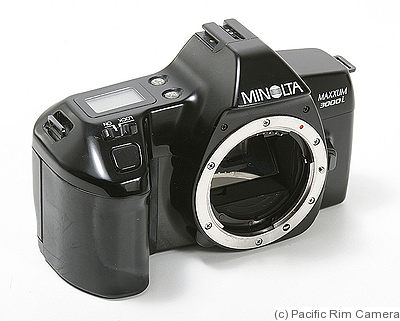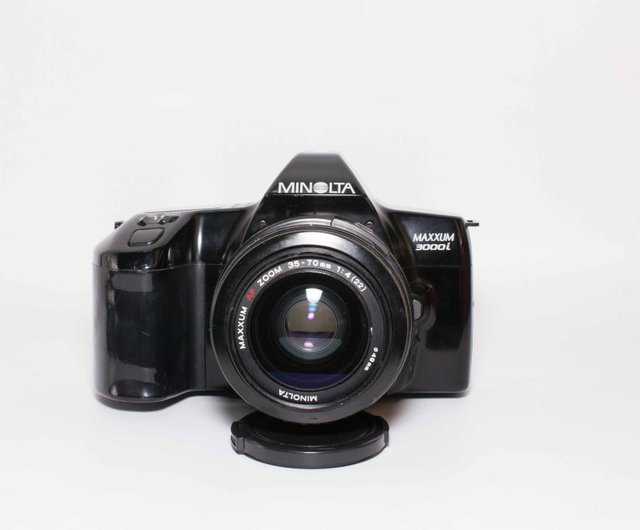

In other respects, the Maxxum offered most of the standard features of other cameras of the day, with the exception of a rather low flash sync speed (1/125 sec.) and no multi-exposure capability. The metal housing of older Minolta SLR cameras was replaced with a lighter, cheaper body made of plastics. However, electronically controlled buttons on the camera body now replaced the mechanical aperture ring on the lens, and the setting was electronically displayed on the body and in the viewfinder.

The aperture and focus were mechanically driven through the lens mount from the camera body. The Minolta 7000 had its AF sensors and the focusing drive inside the camera body, and as a result the lenses could be much smaller and cheaper. Nikon already had a camera with integrated motor drive on the market, the N2000 ( F-301 in UK), but its autofocus counterpart, the N2020 ( F-501 in UK), appeared after the Maxxum/Dynax. The Pentax ME F had focus sensors in the camera body, while the Chinon CE-5 used a lens with built-in active infrared sensors. I don’t know what aperture or shutter speeds were used in these photos shot in Oxford, because it was entirely up to the Minolta Dynax 3000i and it wasn’t saying.Although the Nikon F3AF (1983), Pentax ME F and Chinon CE-5 already had presented autofocus single lens reflex cameras, autofocusing could not be achieved without the use of special motorised AF lenses. I guess Minolta weren’t expecting people to take pictures of buildings with this lens. It has quite pronounced distortion even at the modest 35mm wide angle. I didn’t have a more distinguished Minolta AF lens to try, but the fun for me was to use the lens I found on the camera.
MINOLTA CAMERA MAXXUM 3000I MANUAL
There’s always the manual focus option but I never needed to use it.

For most daylight photography the autofocus rarely struggled. Assuming the autofocus has locked on after a half press of the shutter button, you can fire away.

I enjoyed this camera and lens combination because it’s simple. I decided to ignore this litany of disappointment and loaded up with Fuji Superia 400. Comments such as ‘easily the worst lens I’ve ever tested’ and ‘there is no reason to buy this lens’ are typical. The filter thread is a diminutive 46mm.Īccording to most reviewers the lens is not good. There’s an auto/manual focus switch, and the zoom is operated manually. It’s plastic with a metal mount and it looks and feels like the budget kit lens it is. The kit lens sold with the Minolta Dynax 3000i was the AF Zoom 35-80mm f/4-5.6. The viewfinder is pretty ordinary and LEDs accompanied by a beep indicate autofocus and under/overexposure. However, you won’t know what the camera selects as no exposure information is displayed. I found out online that shutter speeds go from 4 seconds to 1/1000. The LCD panel shows frame count, battery charge, standard setting or high speed setting as mentioned above, and self-timer indicator. It has a built in motorised film winder, on/off switch, self-timer button and another button if you want faster shutter speeds. The shiny plastic Dynax 3000i body requires a 2CR5 battery and is compact but feels solid. In the 1980s Minolta must have identified a market for a user-friendly point-and-shoot autofocus SLR.


 0 kommentar(er)
0 kommentar(er)
